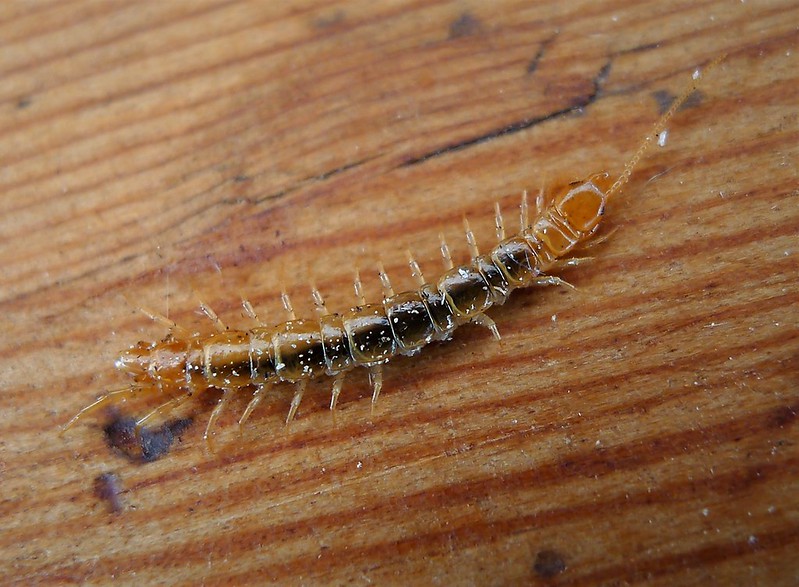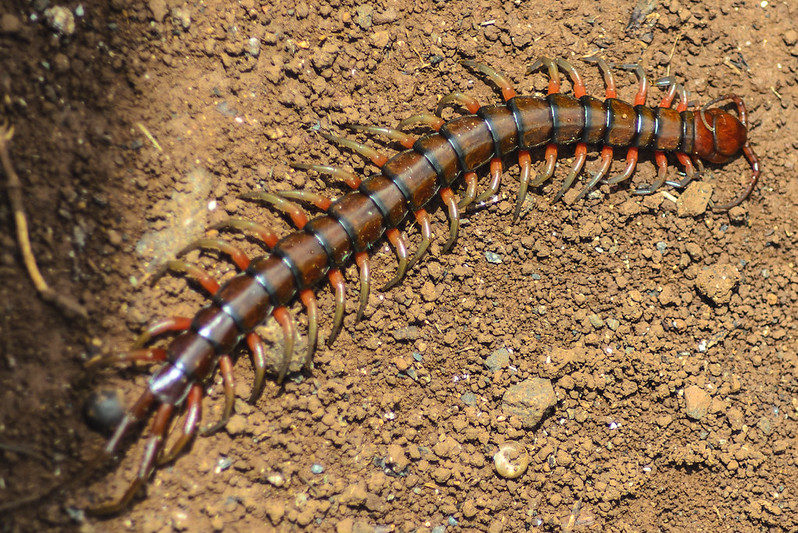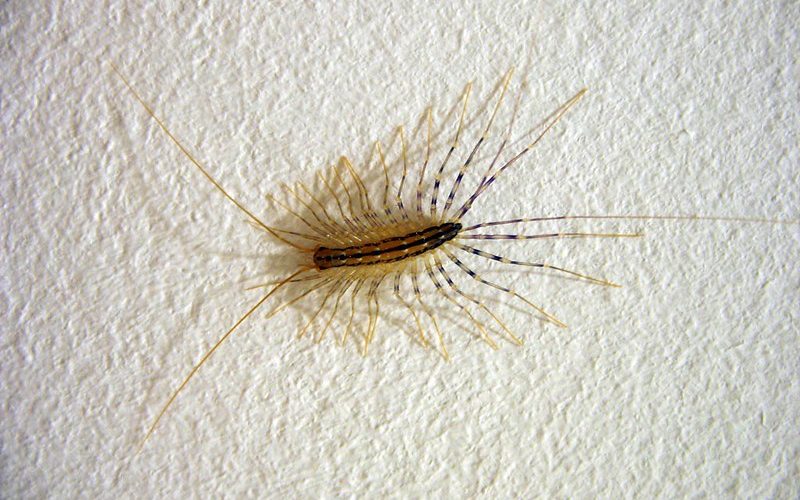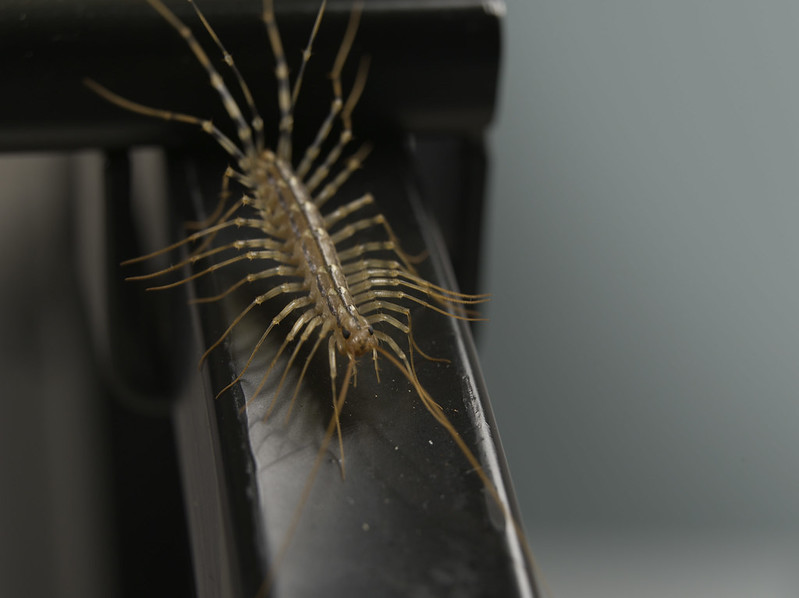What do Centipedes Look Like?
Centipedes, which belong to the Chilopoda group of arthropods, are a diverse family of species.
Over 3,000 have been identified to date, and thousands more are strongly believed to roam the globe. As with any really diverse species, there’s a lot of variation in their visual appearance.
The house centipede, which bears the Latin name Scutigera coleoptrata, is one of the more prevalent centipede species — as well as the kind you are most likely to encounter within your home and around your garden, if you live in the United States or Europe.
These bugs:
- Have long and flat bodies.
- Have a gray-yellow color, with the legs and antennae being lighter.
- Have four pairs of legs when they hatch, acquiring more with each molting or change in their life stage. House centipedes can have up to 15 pairs of legs by the end of their lives.
- Measure between one and one 1 ½ inches. Once you take their long antennae and longer back legs into account, house centipedes can appear to be up to four inches long. The females’ hind legs are longer than the males’.
- Have clearly visible mandibles.
Other types of centipedes can be larger in size, as well as having different colors that include a deep brown, gray, black, and gray with bright yellow legs and a yellow head. In shape, however, all members of the centipede family have a similar appearance.
What’s the Difference Between Centipedes and Millipedes?
Centipedes and millipedes are both arthropods with many legs and long bodies separated into numerous segments. Both are groups, rather than species — and over 12,000 individual millipede species have been identified. Centipedes belong to the Chilopoda class, and millipedes belong to the Diplopoda class.
Compared to centipedes, millipedes:
- Tend to have a rounder, more “worm-like” appearance.
- Feature more, but shorter, segments.
- Have two pairs of legs for every body segment.
- Have smaller, shorter, and thinner legs as compared to the rest of their bodies.
- Have a pointy rear end, devoid of any tail-like appendages.
- Move slowly, while centipedes can, as predators, be rather fast.
Millipedes (meaning “a thousands legs”; not a literal description) are arthropods, just like centipedes, and have numerous legs and long bodies. These are, however, very different groups of bugs. Centipedes are predators (though, they aren’t particularly dangerous to humans). Millipedes are, on the other hand, mainly herbivores, bugs that feed on decaying plant and organic matter such as leaves, fungi, and emerging seedlings.
What Do Centipedes Eat?
Common house centipedes are known as insectivores, meaning creatures that eat insects, but arachnids also feature heavily on their menus.
House centipedes need constantly moist or humid conditions to protect themselves against ever-looming dehydration, prefer cooler temperatures, and search for dark environments.
They also require a constant supply of food. If they live within your property, their diet will include pest bugs like:
- Cockroaches
- Silverfish
- Dust mites
- Smaller spiders
- Ants
- Bed bugs
- Clothes moths
With the exception of spiders, which likewise prey on harmful pests, these are all bugs you don’t want on your property.
Not only are many of them associated with high moisture levels (which pose their own threats to your home, including that of a mold infestation), their presence can also cause health complications. Getting rid of centipedes (and many other indoor pests) can often mean fixing moisture or structural issues with your home.
Therefore, even though house centipedes are commonly considered a pest, or at least a nuisance, they can be actively helpful as they manage other pests.
Citations and Credits



